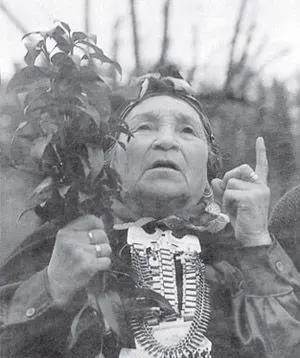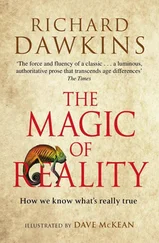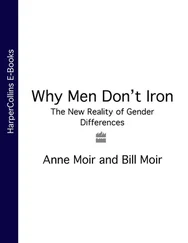Ejo Takata said, “For a chicken to be born, the hen should peck at the eggshell from the outside, while the chick pecks at it from within.” However, in many cases, however well-intentioned the client may be, his unconscious defenses are so great that he cannot collaborate on his healing. No word, no advice, can break through the barriers of his false identity, no attempt at bringing awareness can separate him from his childlike point of view, and his negative feelings dominate him, driving him away from the path that could lead to self-discovery. When this happens, in order to release the client from his problems, we must treat him as a patient.
For the primitive healer death is always a disease, an injury, caused by envy of others. The patient is invaded by a foreign entity, and instead of being cured she must be liberated, expelling what has been sent from her soul and body. To this end, as we have seen, the charlatans of the city turn to cleansing rituals or the imitation of surgery. In these cases of powerlessness (in which the person creates a tumor, a persistent physical pain, a paralysis, or a depression in order to avoid confronting the cause of her suffering, which might be a family secret, incest, social shame, embarrassing diseases, etc.), no success will be achieved through oral language, analysis, the recommendation of an act, or the gaining of awareness. The only possibility for relief is to eliminate the symptom. However, most of the symptoms are manifested by the body, which is the dumping ground for unresolved problems, so the therapist comes in to expel the problems, treating the patient as “possessed.” In the Gospels, we are told that the first thing Jesus Christ did after spending forty days fasting in the desert was to enter a temple and with loud cries expel the demons from a possessed person.

A machi with a branch of cinnamon, a sacred tree for the Mapuche.
Photo: George Munro.

On my trip to Temuco, a city in Chile a thousand kilometers from the capital, I had the opportunity to accompany a kind ethnologist on the muddy roads that wind through the mountains. We traveled in a powerful Jeep loaded with “needs”—commodities that these poor people lack such as coffee, fruits, soft drinks, flour, cookies, and so forth — that would allow us to be well received by a Mapuche healer. In a tiny valley between three peaks we found a modest hut surrounded by a garden with small trees and medicinal plants, where pigs, chickens, three dogs, and four children roamed about. Very near the door was a rehue, a sacred altar about two meters tall made from the trunk of a tree, with seven steps cut into it and surrounded by cinnamon sticks. In a manner of speaking, the rehue is a vertical altar on which the machi stands. Using it as a base, the machi utters her incantations in a language that comes from the depths of time. Thanks to the shipment of “needs,” we were kindly received. The woman, who was pregnant, wore a simple skirt and sweater vest. Over these humble clothes she wore a long silver necklace and spiked silver bracelets on her wrists. Despite her wrinkled face, she was no more than thirty years old.
The ethnologist had told me that this woman, married very young to a man who was a heavy drinker, had dreamed one night that a white serpent came to her and gave her the power to heal. She woke up distraught, feeling ignorant, too burdened by the weight of her husband and children to deal with the ills of so many people. But her body started to become paralyzed, and she found it more and more difficult to breathe, until she was at the point of dying in atrocious pain. The white serpent came to her in a dream again, and this time she told it that she would agree to be a machi. The snake immediately gave her the power to recognize the healing value of plants and taught her to heal using ancestral rites. She awoke speaking the mysterious language of the machis, and the first thing she did was to cure her husband of his vices and make him her assistant.
She allowed us to attend a healing session in a small, very clean room decorated with fabrics woven in geometric patterns and a photo of her with her husband, their children, and their dogs. She received a sick man covered with a wool blanket who was carried in the arms of his wife and his mother. He was pale, with fever and pain in his stomach and liver, and his legs were so weak that he was unable to walk.
“An envious man, we’ll soon see who, has paid a sorcerer to send you this ill. I will chase it off of you,” the machi said to him as she laid him down on his back on a small rectangular table, with his feet flat on the dirt floor on each side. She struck the kultrung, a small drum with cosmic significance, and while hitting it began an incantation to each of the four cardinal points. Then, apparently in a trance, she flogged the air around the sick man with a handful of herbs, as if banishing invisible entities. “Evil spirits, leave this place! Leave this poor man alone!” Then, in a resounding voice she said, “Bring me the white hen!” Her husband, a broad-chested, short-legged man, his face embellished by respectful love, brought her the bird. The healer tied its legs and folded its wings so that it could not flutter or escape. She put the hen on the patient’s chest. “Look well, poor man. The life you see in those eyes is your life. The heart that beats is your heart. Those lungs that breathe are your lungs. Do not blink; do not stop looking at her.” She struck the drum rhythmically, crying with surprising authority, “Get out, bad bile! Get out, devil fever! Get out, stomach pain! Set free this good man, this brave man, this handsome man.” Then, gently, she took the white hen and showed it to the sick man and his family, who trembled in surprise. The hen was dead!
“The evil in your husband, your son, passed into this hen. She died so that you might live. You are healed. Go to the yard, gather dry wood, and burn her.”
Seeing that his illness had passed to the hen, the sick man’s imagination allowed him to believe that he was healthy. His fever and pains vanished. He got up without any help, went smiling out to the garden, gathered dry twigs, skillfully lit a fire, and burned the bird. For my part, I imagined several ways in which the machi could have managed to kill the bird surreptitiously. Perhaps she thrust one of the spikes on her bracelet into its neck, pressed on a nerve center, or, in complicity with her husband, poisoned it beforehand. What did it matter? The point was that she was able to affect the patient’s mind, making him believe that his illness had been removed. Are all diseases a manifestation of the imagination, a kind of organic dream?
Some time later in a course that I taught to doctors and therapists in Sanary, in the south of France, I applied this primitive concept to the removal of evil from the body, coming closer to what I call “psycho-shamanism,” taking a few minutes to cure a woman of a tic that she had had for forty years. Constantly, every two or three seconds, in a broken rhythm, she would shake her head from side to side. I called her up in front of a hundred students and proceeded to interrogate her, using a friendly voice that instantly made me a paternal archetype for her. Applying Pachita’s technique, despite her forty-eight years, I spoke to her like a child. “Tell me, little girl, how old are you?” She fell into a trance and replied in a childlike voice, “Eight years old.”
“Tell me, little one, who are you saying no to all the time with your head?”
Читать дальше














